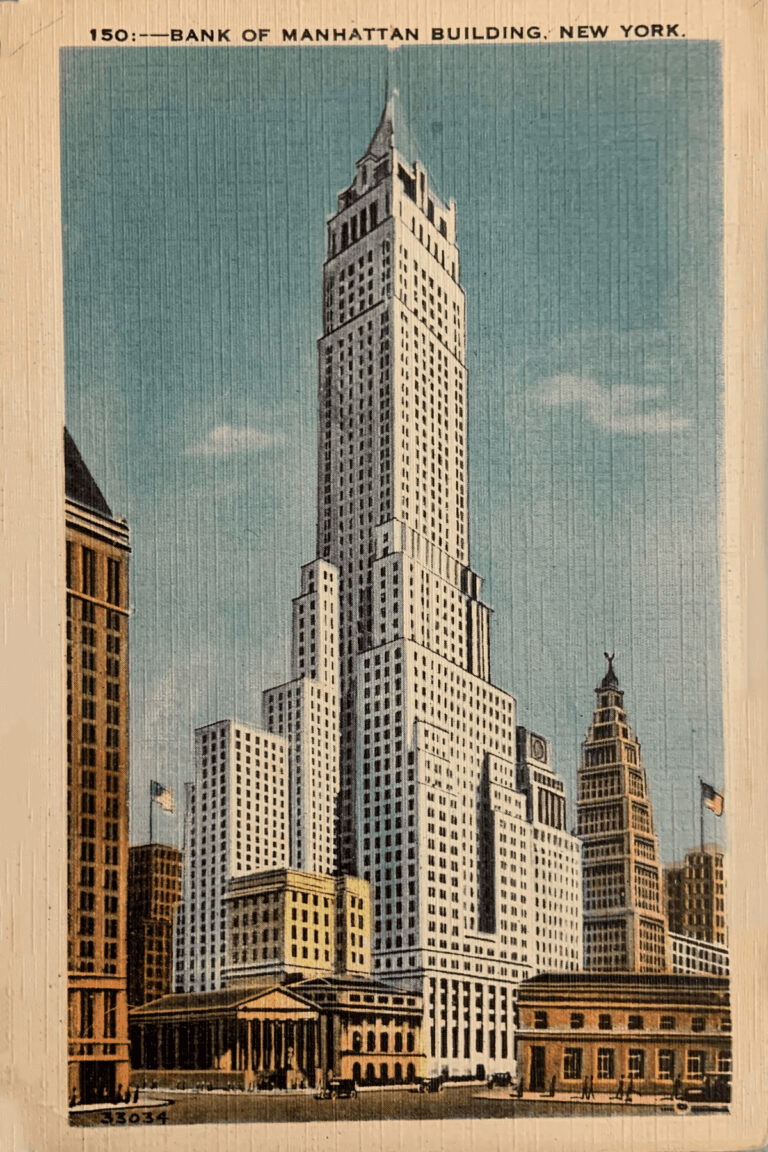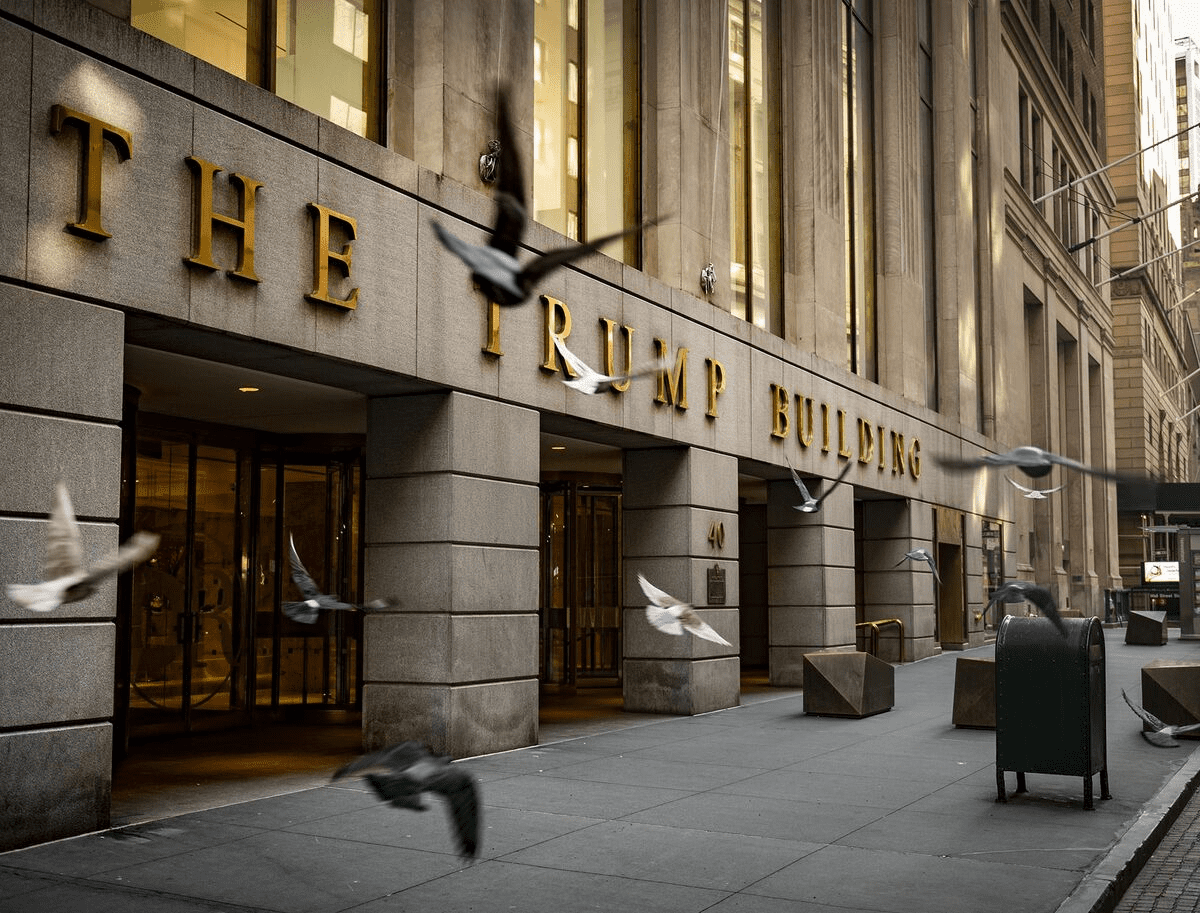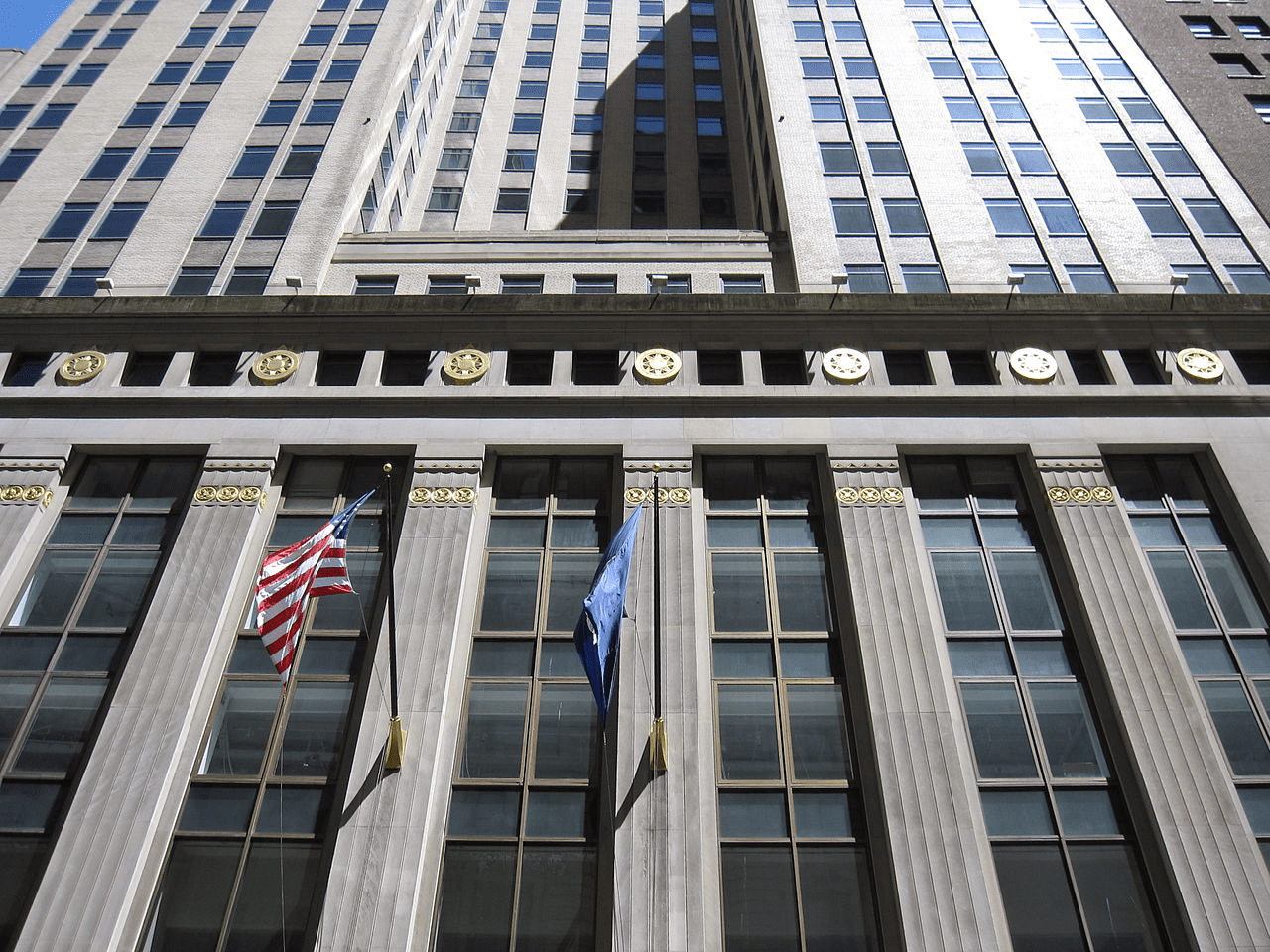This article is about one of the tallest skyscrapers in the United States. The building is a New York City landmark and is listed on the National Register of Historic Places. Find out more about 40 Wall Street at manhattan-future.

Foundation
40 Wall Street, also known as the Trump Building, is a neo-Gothic skyscraper with a height of 927 feet (283 m). The building is located on Wall Street between Nassau and William streets in Manhattan.
The idea of the current skyscraper belongs to the banker George L. Ohrstrom. The construction of a 20-storey building was primarily planned. Subsequently, the plans changed in favor of a 45-storey one and then a 64-storey building. The plans of the developers were to build the highest skyscraper in the world. Also during this period, it was announced that the Manhattan Company would become the main tenant of the new building.
Developers reduced the construction period to one year so that the tenants could move in earlier. The skyscraper began to be built in 1929. The process was really relentless and extremely fast. Builders worked in three shifts. The construction lasted day and night. In April 1929, the height of the Manhattan Company Building was increased to 927 feet (283 m). It is also worth noting that during this period, the construction of the Chrysler Building skyscraper also took place. For a time, these two buildings competed for the title of tallest building in the world. This title was eventually taken by the Chrysler Building. During the construction, a lot of money and effort were spent, but still the goal was achieved. Already in 1930, the building was completed. About $25 million was spent on the construction at that time.

Further destiny
After the completion of construction in the same year, about half of the building’s area was rented in a new skyscraper, which was called 40 Wall Street. In 1941, the large-scale electrical company Westinghouse Electric and Manufacturing became the largest tenant. In the years of the Second World War, unsurprisingly, the number of tenants increased even more. In 1944, the occupancy of the building was 90 percent.
It is also impossible not to mention the accident that occurred in 1946. That year, an American plane hit the facade of 40 Wall Street on the 58th floor due to poor visibility and significantly damaged it. After these events, the building was reconstructed.
A special period for 40 Wall Street was also the cooperation with the 45th US President Donald Trump. In 1995, Donald acquired the skyscraper lease with the purpose of restoration and subsequent use as the office and commercial property. His plans were to transform the lower floors into commercial institutions and the upper ones into residential premises. Trump spent approximately $35 million on reconstruction. He repaired the lobby, replaced several hundred windows, repaired 30 elevator cabins, lighting, etc. Nevertheless, over time, he abandoned the idea of refurbishment of the upper floors into residential premises. By 1998, almost all the areas in the building were leased. In 2004, Trump tried to sell the building expecting offers worth more than $400 million, but they never came true. It is also worth noting that during this period the building became known as the Trump Building.

Architecture
Now, let’s talk about the architectural features of the skyscraper. The building was designed by the leading architect Harold Craig Severance, the assistant architect Yasuo Matsui and the architectural company Shreve & Lamb. The edifice was built by the L. S. Starrett company in the neo-Gothic style. The building itself is located in the area in the shape of the letter L. The facade of the skyscraper has numerous indents. Its lower part is made of limestone. The upper part is made of a brick facade of the Buff color. The facade also includes trestles between the windows on each floor. The pyramidal roof of the building is made of lead copper, which eventually oxidized and turned green. Inside, on the lower floors, there was a two-story banking hall Manhattan Company, a boardroom, a trading hall and two basements with storage facilities. The remaining floors were rented to tenants. In addition to that, there were private clubs on several floors as well as an observation deck on the 69th and 70th floors.